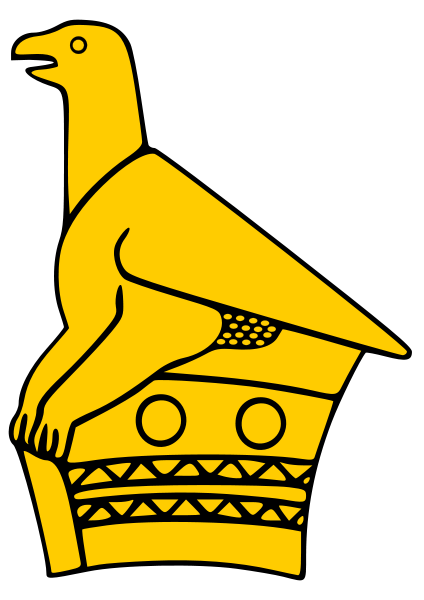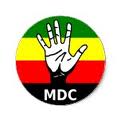Pioneer Days
And what about the effects of the rinderpest?
Rinderpest first made its appearance in Africa in 1889. It has been described as 'a specific malignant and highly contagious fever characterized by acute inflammation of the mucous surfaces', affecting cattle, game, and, in a minor form, sheep' (Van Olsen 1977). As Burnham writes "Great herds of buffo were exterminated by it; millions of antelope of all varieties from the lordly eland to the tiny dick-dick, died of it". Known in Zambia by 1892, the Zambezi proved an effective barrier until March 10, 1896 when it entered into Zimbabwe. With its well-developed communications and transport networks, the disease blossomed in the country. Within a period of 25 days (of the first reported occurrence south of the Zambezi) rinderpest travelled southwards at a rate of 32km a day, and had reached a point 25km north of the Cape border on March 31. The effects were devastating across the region but especially in Rhodes's new country. As Mason (1958) said "Matabele society was disrupted by tearing out one of the most binding strands in the whole fabric". The whites reacted by shooting vast numbers of cattle in an attempt to create an animal-free corridor to halt the spread of the disease. As was becoming common, they failed to communicate this good intention to the Matabele who saw their animals either dying horribly or being gunned down; it is not difficult to appreciate how this accelerated the burgeoning resentment to white rule.
Enter the Native Police ...
Ranger (1967: 117-119) covers the establishment of the so-called Native Police in good detail, noting their duties were "to assist Native Commissioners in the various districts in collecting labour, arresting deserters, procuring evidence in native cases, police and detective work generally". Curiously unconcerned about the job possibly maintaining undesirable military habits, the BSACo initially tried to employ Zulus as the policemen, being rebuffed by the Natal government. Undeterred, the Administration recruited and trained ex-soldiers from the crack regiments of Imbesu and Insukamini all of whom became good shots and familiar with the workings of the white administration; this knowledge would stand them in good stead when the fighting began. The more serious use of the Native Police was in recruiting forced labour and collecting cattle; as Ranger writes, they became the tyrants of the countryside, "more like a brigandage" than a police force as one witness reported to the Commission of enquiry. By the beginning of 1896 over 300 men were working for the Administration causing incredible resentment for their heavy-handed treatment of their own people. Selous (1896) writes of a visit from a senior induna, Umlugulu, who complained of the treatment at the hands of the Native police: "I have no complaints against the white policemen; but the black police, wa duba, wa duba sebele, they give me trouble, they really give me trouble". Umlugulu also voiced a common complaint against the Native Police, that they would take liberties with the women of the homestead when out recruiting labour. It is no wonder that the first casualties in the war were a body on Native Police murdered while on patrol (see below).
What about the influence of the priests?
Ranger's (1967) book Revolt is perhaps the most influential book on Zimbabwean history yet published. Writing about it a decade later, Ranger repeated the book's central thesis that the "risings were led by Shona chiefs and Ndebele indunas but at the same time the influence of remarkable religious figures enabled prophetic and innovative modifications of 'tradition'. The risings 'summed up' African pre-colonial history; at the same time they contained elements which remained constant to mass protest throughout the colonial period." To paraphrase the book, Ranger argued that the Mwali religion controlled and inspired the uprisings, each important shrine controlling their area; Matonjeni, Njelele and Mambo exerting considerable influence to bring their adherents to fight, while a fourth shrine at Mangwe remained neutral. Agents from these shrines, most notably Mkwati, also operated in Mashonaland and helped begin the fight there while cooperating with the main mhondoro there. Ranger claims that the religious authorities promised a new future without the whites and assumed a moral, political and socio-economic authority that lasted until the struggle for independence in the 1960s and 1970s. Even normally staid historian Oliver Ransford (1968) shows the influence of Ranger's ideas, claiming that various priests acted as commissars in the Matabele army.
And the argument against this idea is?
Historians Julian Cobbing (1977) and David Beach (1986) have succinctly argued against simply accepting Ranger's thesis and their counter claims are well-summarised by Ndlovu-Gatsheni (2009). Suffice to say that Revolt has to be read in the context of the times whereby it created a usable history for the nationalist movements of the 1960s and provided a foundation for the nationalist imaginations of Zimbabwe. Cobbing raises the valid point that the structure of the risings matches closely with the participating political units and he prefers to highlight the influence and motivation of the Matabele aristocracy in coordinating the uprisings. Beach's ideas will be discussed in another briefing but one point deserves recognition here: the idea of zvimurenga. Multiple outbreaks and resistance to white rule seems to have been the order of the day rather than the existence of a central authority dedicated to expelling the whites.
Sourced from the Zanj Financial Network 'Zfn', Harare, Zimbabwe, email briefing dated 14 March 2011


 South Devon Sound Radio
South Devon Sound Radio Museum of hp Calculators
Museum of hp Calculators Apollo Flight Journal
Apollo Flight Journal Apollo Lunar Surface Journal
Apollo Lunar Surface Journal Cloudy Nights Classic Telescopes
Cloudy Nights Classic Telescopes The Savanna - Saffer Shops in London
The Savanna - Saffer Shops in London Linux Mint
Linux Mint Movement for Democratic Change
Movement for Democratic Change